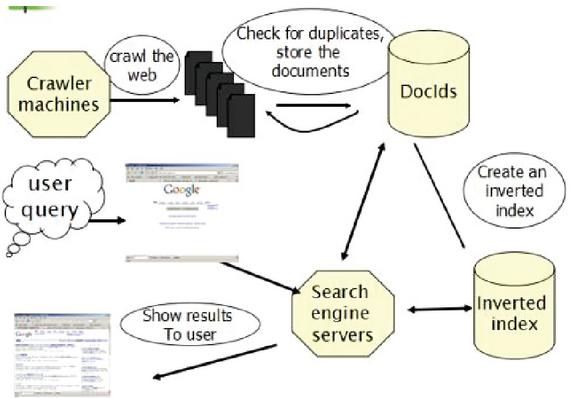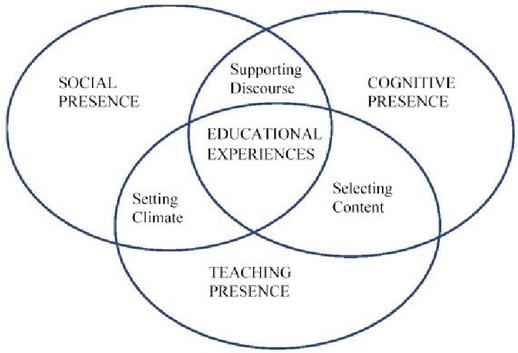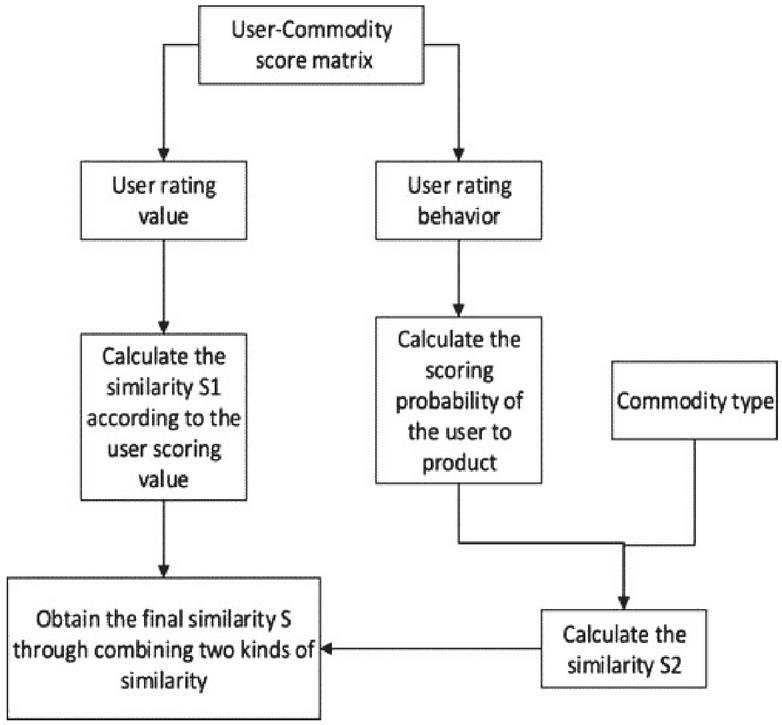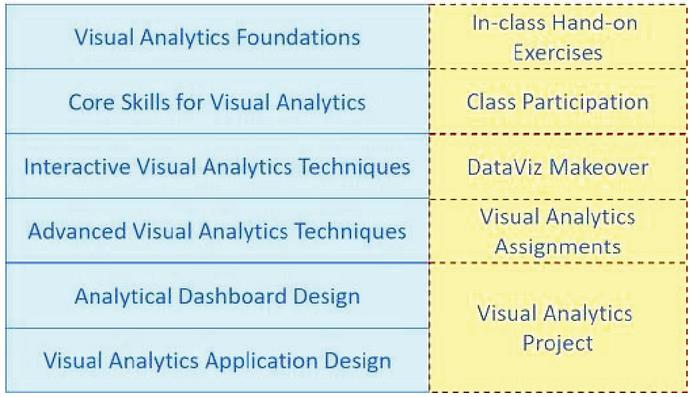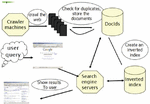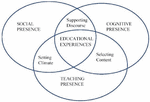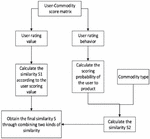Integration of “Offline Online” Teaching Method of College English Based on Web Search Technology
Lijun Bian
Henan Finance University, Zhengzhou, Henan, China
E-mail: bianlijun19@163.com
Received 01 April 2021; Accepted 11 May 2021; Publication 24 June 2021
Abstract
The change of social demand for English application-oriented talents has affected the transformation of the way of cultivating talents in College English. The traditional training mode of indoctrination has exposed more and more disadvantages, and the demand of new teaching mode is imminent. This paper first analyzes the current situation of College English learning platform in China. Then, it discusses the design and implementation of “Online offline” College English learning platform based on Web. The overall structure and function of the database are designed in detail. The teaching platform provides students with learning tools, learning resources, communication platform, testing and evaluation functions, and can evaluate students’ learning behavior, learning process and learning effect. This paper traces and collects a large amount of data left by learners in learning college English courses, and analyzes learners’ learning habits, learning progress and learning effect. Finally, according to the learning big data, this paper customized a reasonable personalized learning platform and improved the online teaching personalized service system.
Keywords: Web technology, college english, learning platform, big data.
1 Introduction
The continuous emergence of new technologies accelerates the pace of global informatization [1]. The strong development of the Internet and the increasing integration of teaching globalization break the traditional teaching mode, making online teaching increasingly popular. Netease open class enables us to enjoy the elegant demeanor of famous teachers from world-famous schools without leaving home [2, 3]. The continuous promotion of national excellent curriculum projects has given birth to the reform of front-line teaching. There is no doubt that the development of online technology is the catalyst to promote resource sharing, but the problems caused by it are also increasingly apparent. At present, the online teaching resource database mainly provides mechanical functions such as browsing, downloading and uploading on the basis of courseware, materials, network courses, teaching plans and other teaching resources. In the online classroom, especially in the national excellent curriculum design, educators pay more and more attention to the individual differences of learners in theory, and the graded teaching is also considered in the curriculum design, but the whole is still “material” centered, and the idea of “learner” centered is not reflected in the micro and specific operation [4]. Online teaching lacks of face-to-face communication between teachers and students, which is a one-way teaching platform and curriculum. What every learner sees in the learning process is basically the same content. The teaching platform does not have the characteristics of personalization, customization and intelligence, and lacks the follow-up stable and continuous learning support. In reality, learners’ learning background, learning habits and efforts are not the same, and there are individual differences, which leads to the contradiction between the rich teaching resources and the personalized needs of users. To solve this contradiction, we need to introduce the content of personalized service into the resource library [5]. The application of Web mining technology to track learners’ information helps to build a personalized online teaching platform, which can solve the problem of rich but underutilized information resources and optimize resources better.
In China, web mining is still a frontier research field, in the primary stage. In the field of foreign language teaching research, there are a few literatures [6, 7] on the application of data mining technology. Liu feibing briefly introduces the main process of the application of data mining technology in multimedia teaching and the main role of data mining mode [8]. Ni Chuanbin’s modeling and classification based on data mining explores the influence of emotional factors on the target language contact of foreign language attrition group [9]. Wu Yang applied data mining to college English teaching quality analysis, and Wang Xue studied the application of data mining in English linguistics topic tracking evaluation system [10]. The platform construction of online courses and the early warning function of data mining are not involved. It can be said that in the micro and practical aspects, it is very rare in China to analyze the data from data mining and Web Mining to reveal the learners’ learning situation and then customize the teaching resources for them. So far, in the field of foreign language teaching, there is no literature on the application of Web data mining technology. Therefore, Web Mining Technology in foreign language teaching and online platform construction of foreign language courses has a lot of development space.
2 Web Mining Technology
Although Web Mining and data mining are related, they belong to different concepts. Data mining was formally proposed at the 11th International Conference on artificial intelligence in 1989, which refers to the process of discovering useful knowledge and rules from a large number of incomplete, noisy, fuzzy and random data and information. It is a process of establishing models and discovering the relationship between data in large-scale massive data by using various analysis methods and tools. These models and relationships can be used to make decisions and forecasts. In recent years, data mining has been widely used in government decision-making, enterprise operation, marketing, medical and health financial services, university management and other fields at home and abroad. Web mining is a technology that applies data mining technology to the use of Web site resources and automatically finds and extracts information and knowledge from web documents and services. It uses data mining algorithms such as qualitative induction, classification learning, association rule mining and clustering analysis to extract interesting and useful patterns from related resources and users’ browsing behavior. According to the different mining objects, web data mining is divided into three types: Web content mining, web structure mining, and Web Usage Mining (Figure 1).
Figure 1 Web mining classification.
Figure 2 Traditional online teaching environment.
In short, web mining technology is easy to use, and does not need users to provide subjective evaluation information. It can handle large amounts of data and dynamically obtain user access patterns. Through the analysis of users’ access content, stay time and frequency, we can get the knowledge about learners’ access interest and access pattern characteristics. According to the characteristics of these users, the web site can dynamically recommend teaching resources for learners and provide them with links to the content they care about. This technology is used in the field of courseware construction, which can collect, track and analyze the learning information of online learners, and truly realize the personalized and customized learning.
The difference between traditional teaching environment and personalized teaching environment lies in the intermediate link, which can be clearly seen through the comparison between Figures 2 and 3. In the personalized environment, the learning platform of the middle layer is expanded. The personalized scheme can establish the personalized learning mode according to the characteristics of learners. The learning platform records the user’s access, reorganizes the web access transaction model, and obtains the web access transaction library. Mining the web access transaction database, generating frequent itemsets and storing them in the knowledge base. Then, the personalized recommendation module extracts the current user’s access sequence, matches the frequent patterns in the knowledge base, and recommends the teaching resources to learners according to the association principle. Different learners will have different ways of behavior when using the resource library. Personalized service is to provide different services to users according to the characteristics of different users. The main task is to obtain useful information from massive data efficiently to meet the personalized needs of different users. Personalized network resource library provides each learner with learning resources to meet their needs, and automatically adjusts the content of resources, making learners feel that the whole teaching system is specially customized for them.
Figure 3 Personalized online teaching environment.
Furthermore, the personalized service platform provides learners with teaching resources in line with the characteristics of personal interests. With the change or transfer of learners’ interests, the system can automatically track these changes and adjust the content of teaching resources. In this way, learners’ interest in learning will be mobilized, and the system will automatically provide them with targeted and dynamic teaching resources that match scholars’ interest in learning. Resources will then really “live”.
Figure 4 shows the key technologies of personalized recommendation in online learning. Personalized online teaching platform of English grammar course is the key technology based on Web mining. Through information collection and analysis of learners’ learning habits and use patterns, it predicts their future use patterns, provides corresponding personalized resources, and realizes the dynamic customization of teaching resources.
Figure 4 Personalized recommendation process.
3 Application of Web Data Mining Technology in the Construction of Modern English Grammar Online Course
As mentioned above, the application of Web Data Mining Technology in teaching is relatively limited and not in-depth. In the process of teaching, the factors that affect teaching are developing and dynamic, not constant. Therefore, in the course construction, we need to use a dynamic point of view to look at these key factors. According to the existing information, the application of Web Data Mining Technology in the construction of language online courses is still in the initial stage.
Both the project leader and the lecturer of the online course of modern English grammar have rich experience in English grammar teaching and research for many years. Each of them has unique and lively teaching characteristics and has won teaching awards at school level or above. The teaching team has effectively integrated high-quality teacher resources. The selected Book Modern English grammar course was published in 1998. This textbook is focused, systematic, concise and inclusive. The course is composed of eight modules (Figure 5). It organizes learning activities with learner centered autonomous learning and aims at building a personalized learning environment.
Figure 5 Course module.
Learning activities are carried out around the four links of “guidance, self-study, promotion and supervision”. The learning contents and tasks of each link are different, but they are related and complementary to each other (Figure 6).
Figure 6 Learners’ learning activities.
Researchers based on Web mining technology to obtain the learner’s personality information, complete the guidance, self-study, promote learning and supervision. Learning guidance accompanies the whole process of learners’ learning, including assisting learners to make plans, understanding learners’ learning difficulties, and providing help. At the same time, we should urge them to study by themselves. Learners can learn independent content according to their own time, or skip familiar chapters, so as to improve learning efficiency and enhance learning confidence. The purpose of promoting learning is to make learning individuals no longer isolated, to promote the continuity of learning, and to offset part of the pressure of learning with the pleasure of learning. At the same time, in the process of completing homework, participating in testing, sharing and communication, the learners develop to the professional courses, consolidate knowledge and optimize learning effect. Teachers have accumulated more experience in teaching reform. The mission of the supervisor is to make the learning process relatively coherent and make persistence a natural habit. All this depends on good learning process management and personalized learning support services. The specific measures are as follows: (1) provide online learning guide service, so that learners can understand the online teaching mode and master the skills and methods of online learning before learning. (2) Through the various forms of “guidance”, “promotion”, “assistance” and “supervision” services provided in the course, especially the specific guidance in learning methods, key and difficult points, the learners’ learning ability is constantly improved while summarizing and summarizing the specific course knowledge. (3) Web data mining technology is used to supervise and support the learning process of learners and master their learning progress and learning situation. From the system records, the vast majority of learners can complete the learning tasks of each chapter in time according to the requirements of the course teaching. (4) Through the online test, we can understand the learners’ mastery of knowledge points, which is convenient for teachers to adjust their teaching plans. At the same time, consolidate the learners’ knowledge. (5) Through the online communication platform (QQ/msrdbbs/wechat/microblog/tweeter/Facebook/blog, etc.), not only can the difficult problems in learners’ learning be solved in time, but also the interaction between teachers and students can enhance their mutual feelings and play the role of teaching and learning. (6) Through the implementation and improvement of learning support services, learners’ satisfaction with the personalized service system of online teaching platform is increasing year by year. Table 1 is the survey data of learners’ satisfaction with the online platform.
Table 1 List of satisfaction survey
| Years | Number of Students | Survey Participation Rate | Satisfaction |
| 2009 | 68 | 81.87% | 97.02% |
| 2010 | 92 | 92.03% | 98.18% |
| 2011 | 70 | 96.06% | 99.31% |
The dynamic management of the whole teaching process is based on Web data mining. There are four main mining methods for this course: path analysis, interest Association, cluster analysis and sequential pattern analysis. Through path analysis to find frequent access path. What learners are interested in will be visited frequently. Through path analysis, we can determine their frequent access path and understand their interested content, so as to provide direction and basis for improving curriculum design and teaching content. If learners are interested in a certain kind of content in the online course, they will find out the relevant interest webpage through the interest entry, and continue to visit deeply through the link. The data mining analysis and statistics of this association can well organize and expand the course content, and improvise the association principle. Cluster analysis aims to cluster learners with similar browsing behaviors and analyze their common characteristics, so that teaching managers can better understand their students and provide them with more appropriate teaching content and personalized services. For example, through cluster analysis, learners can know the right and wrong ratio of each question and their mastery degree of knowledge points. Then, according to the degree of their knowledge points, we set up a step-by-step teaching scheme, provide jumping teaching practice, and further provide them with corresponding breakthrough exercises, so that each learner can master each knowledge point in the course step by step with his own progress. Sequence pattern mining refers to mining patterns with high frequency relative to time or other patterns. Sequence pattern can find the sequence of learners frequently accessing some contents of the course, predict their learning behavior, actively provide them with the expected resources, and reduce the response time of the system. Finally, through the web server, the mining results are presented in a visual interface that learners can understand and accept, and feedback to learners appropriate learning strategies and learning suggestions. Learners can see their online learning status (such as knowledge mastery, access content, learning progress) at any time, and accept regular learning reminders (such as online test and learning time). At the same time, according to the learners’ learning dynamics, the administrators improve the course of modern English grammar, constantly improve and supplement the learners’ personality model, and customize the necessary content for learners to master the course. The courses that meet the needs of learners’ individual development can make them fully enjoy the personalized resources and learning support services customized for themselves, help them develop their personality, and achieve a win-win situation for both sides of teaching.
4 Conclusion
This paper first analyzes the current situation of online teaching, points out the necessity of establishing personalized online teaching platform based on Web mining technology, and then discusses the characteristics and advantages of Web mining technology. The application of this technology helps to optimize teaching resources, purify online learning environment, customize dynamic personalized learning scheme for learners, and provide targeted strategies for teaching. After that, the specific application of Web Mining Technology in the construction of modern English grammar online course is elaborated. Through the tracking of learners’ learning information for three consecutive years, we find that learners’ interest in learning, learning effect and satisfaction with the course are greatly improved. Teachers and administrators refer to early warning and monitoring information to optimize teaching resources and teaching process. It can be said that the technology has broad application prospects.
References
[1] Zhou Yuanqing. The Construction of Excellent Course Materials is an Important Measure of Teaching Reform and Innovation. China Higher Education Research, 2003 (1): 12–12.
[2] Li Zhiyi, Zhu Hong, Liu Zhijun. Guiding the Teaching Reform of Higher Engineering Education with the Concept of Achievement Oriented Education. Higher Engineering Education Research, 2014, 000(002): 29–34.
[3] Ye Lan. Let the Classroom Radiate Vitality – on the Deepening of Teaching Reform in Primary and Secondary Schools. Education Research, 1997 (09): 3–8.
[4] Liang Dingfang. My View on Foreign Language Teaching Reform. Foreign Language Teaching Theory and Practice, 2001 (1): 8–11.
[5] Huang Jianbin, Shao Yongzhen. The Way out of College English Teaching Reform. Foreign Language Circles, 1998 (04): 20–22.
[6] Hu Wenzhong, Sun Youzhong. Highlighting Discipline Characteristics and Strengthening Humanistic Education – on Current English Teaching Reform. Foreign Language Teaching and Research, 2006, 38 (005): 243–247.
[7] Liu Lude. The Enlightenment of Problem-based Learning on Teaching Reform. Education Research, 2002 (2): 73–77.
[8] Zheng Xinmin, Jiang Qunying. A Study on “teacher Belief” in College English Teaching Reform. Foreign Language Circles, 2005 (6): 16–22.
[9] Liu Lude. The Enlightenment of Problem-based Learning on Teaching Reform. Education Research, 2002 (2): 73–77.
[10] Li Guojie, Cheng Xueqi. Big data research: a major strategic field of future science and technology and economic and social development – Research Status and scientific thinking of big data. Journal of Chinese Academy of Sciences, 2012, 27 (6): 647–657.
Biography

Lijun Bian received her Bachelor of Arts degree in English Linguistics in 2005 and Master of Arts degree in English Language and Literature in 2008 from Henan Normal University, China. She works in Henan Finance University from 2008 till now. She received Qualification Certificate for Teaching in Colleges and Universities in 2008 and was awarded Certificate of First Prize on Teaching Skill Contest in Henan Province in 2016. She was granted the title of associate professor in 2016. She is committed to English language teaching and culture research.
Journal of Web Engineering, Vol. 20_4, 1145–1156.
doi: 10.13052/jwe1540-9589.20412
© 2021 River Publishers
